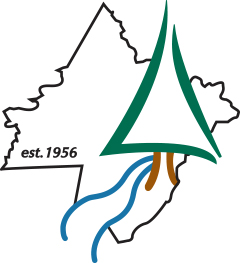News
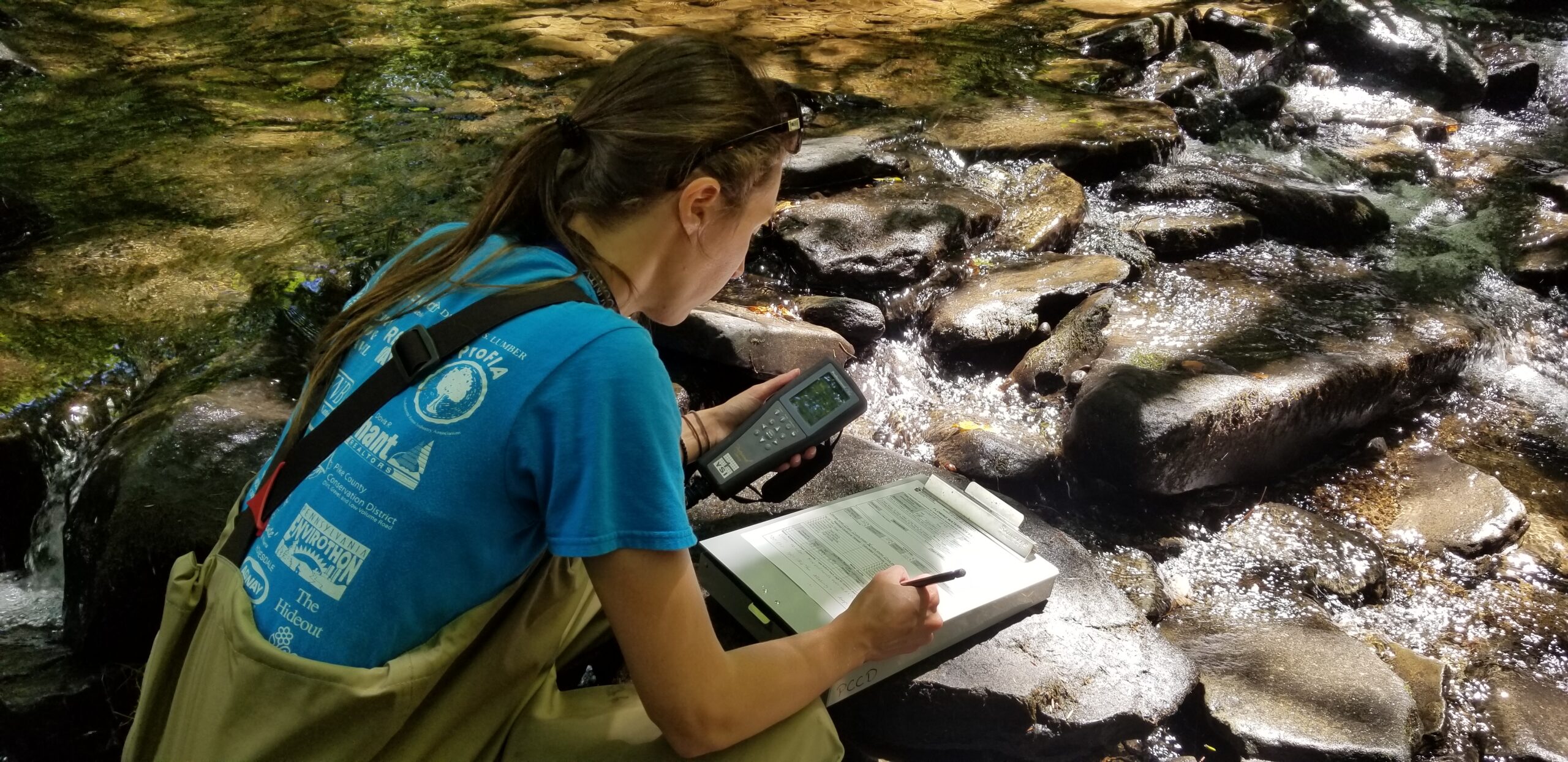
2020 Pike County Streams Environmental Quality Report Now Available
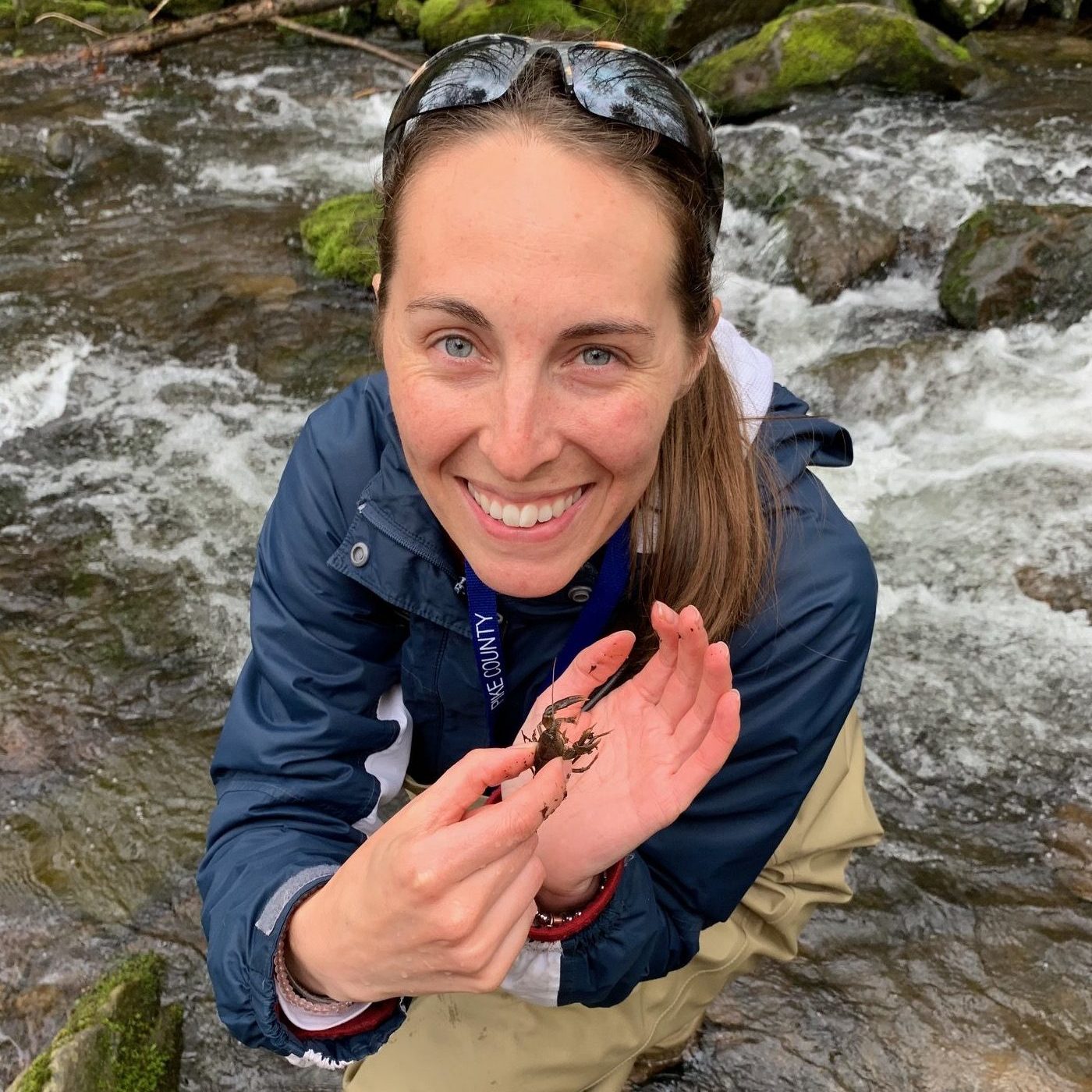
By: Watershed Specialist, Rachel Posavetz (here holding a macroinvertebrate, monitored as an indicator of stream health.)
Surface Water Monitoring Program
Pike County Conservation District (PCCD) has maintained our Surface Water Monitoring Program, focused on monitoring stream health, for 29 years. PCCD has been annually monitoring aquatic macroinvertebrate (aquatic insects and shellfish) populations since 1991, and fish populations since 1995, along with water chemistry and habitat quality of stream sites throughout Pike County. Aquatic macroinvertebrates and fish are widely used as reliable bio-indicators of freshwater health in studies of water quality.
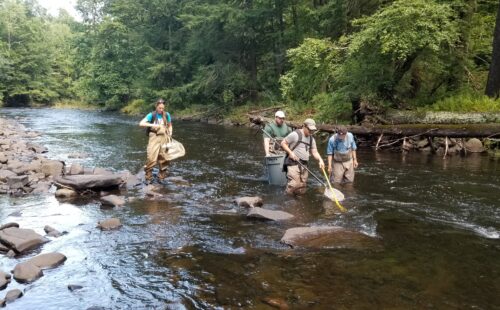
Electrofishing in Shohola Creek.
PCCD Watershed Specialist, Rachel Posavetz, along with assistance from other District staff and volunteers, samples macroinvertebrates when they are most abundant in the spring, using a D-frame kick net to disturb critters from their rocky river-bottom habitat. In the late summer when low water levels ease the ability to collect fish, staff, in coordination with PCCD’s consultant, Aquatic Resource Consulting, Inc., sample fish populations using an electrofishing backpack to temporarily stun specimens that are then released unharmed. This year however, macroinvertebrates were not sampled in the spring due to COVID-19 restrictions, but we look forward to resuming sampling of macroinvertebrates spring of 2021.
Trout Out and About
In August, fish populations were sampled at eleven stream sites, from which we collected a total of 555 individual fish. Every specimen exhibited good health as shown by the absence of physical anomalies such as ulcers, reddening, or tumors, that would indicate infection or parasites. We collected a total of 84 trout. Five sites had brown trout while two had brook trout. Young-of-year trout were present at four of those sites, which is an indicator of natural reproduction occurring in those streams. Trout, especially brook trout, are indicators of water quality because they require consistent cool temperatures, high concentrations of dissolved oxygen, and clean cobbled substrate in which to lay their eggs. Therefore, trout will typically not be found in streams impaired by upstream impoundments contributing low-oxygen warm water inputs, or sedimentation from excessive erosion in-stream or carried from surface runoff elsewhere in the watershed.
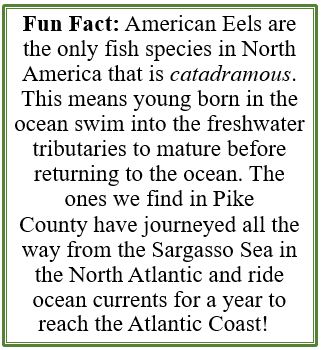
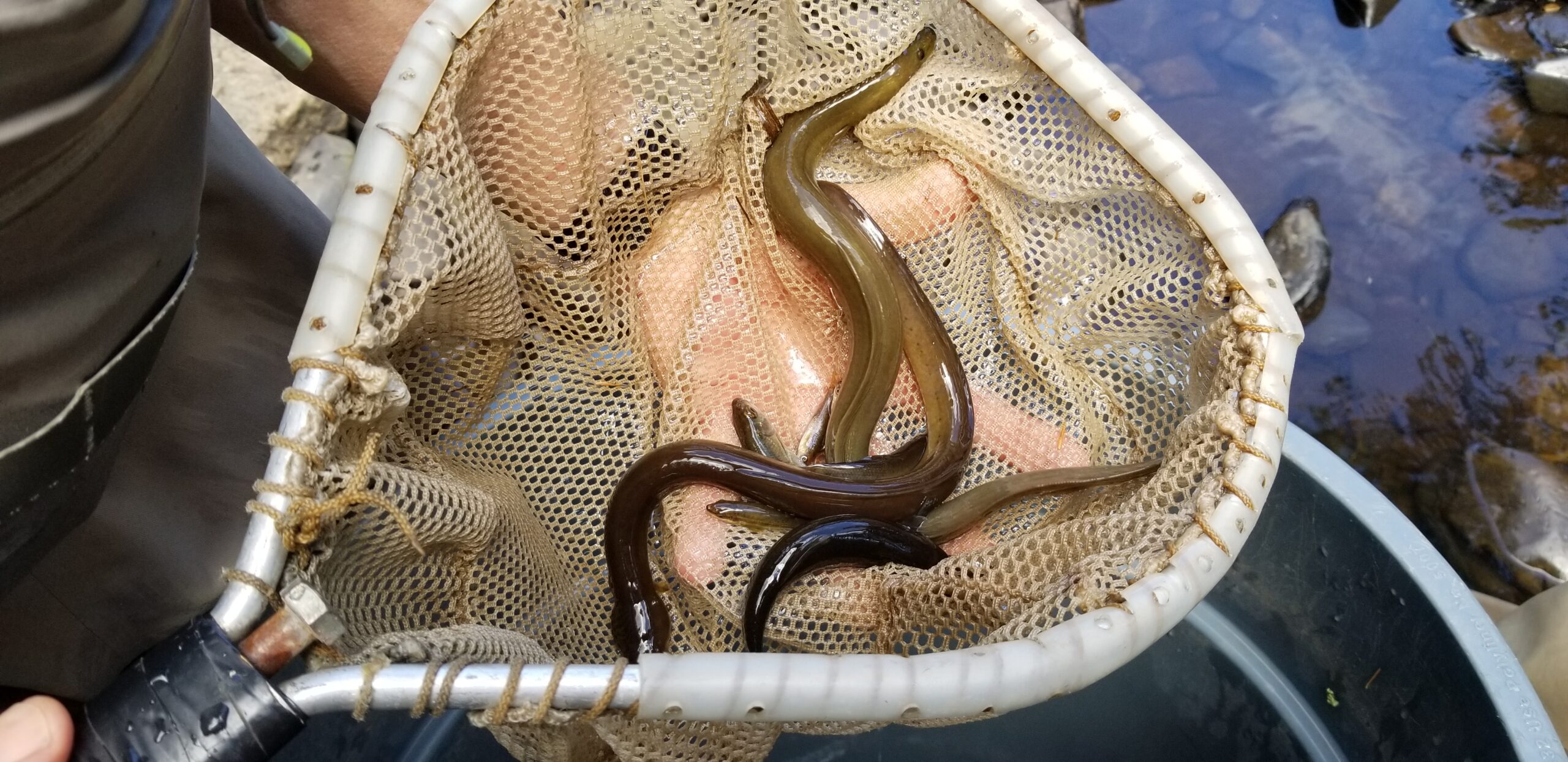
American Eel from Shohola Creek
Another highly sensitive fish species is the Northern Hogsucker, of which one was found in the Lackawaxen River. Longnose Dace and American Eel are moderately sensitive to pollutants and were collected at 3 and 7 sites, respectively.
The diversity of fish species collected in Pike County is also a sign of good aquatic ecosystem health. We collected a total of 16 unique fish species. The two sites with the greatest diversity of fish were Sawkill Creek and Lackawaxen River, with 9 and 8 species collected, respectively. The presence of sensitive species combined with a rich diversity of species collected are all great signs of good water quality in Pike County!
Why Do Chemistry and Habitat Matter?
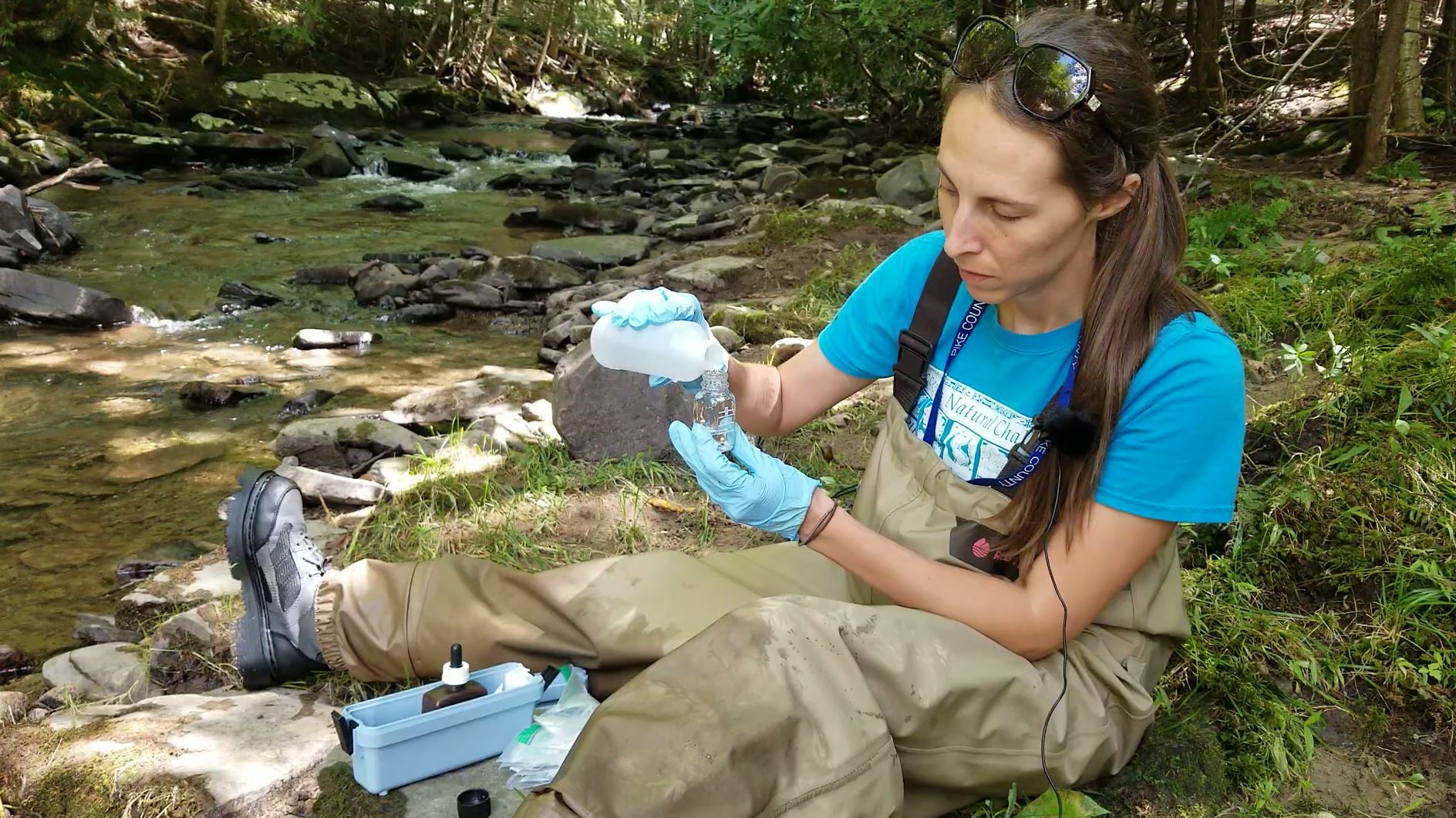
Rachel Posavetz testing the alkalinity of Kleinhans Creek.
Water chemistry and stream site habitat data collected this summer reflected expected values typical for this region. Water temperatures (low) and dissolved oxygen levels (high) were generally good for sensitive aquatic organisms. Conductivity readings were mostly low, meaning low concentrations of dissolved solids, such as minerals, road salt, and anthropogenic wastes.
All sites scored “Optimal” for habitat conditions, exceeding PADEP standards; meaning the habitat quality at every site scored well within the range for the highest quality category. Habitat quality is important both in-stream and along the banks, or riparian zone, of the stream. Stable habitat in-stream provides shelter for macroinvertebrates and fish, and is an indication of controlled stormwater inputs. Stable habitat along the banks, meaning only experiencing natural rates of erosion due to river meandering, provides various forms of protection for the stream.
Why does PCCD monitor streams?
PCCD monitors about 40 stream sites throughout Pike County on a five–year rotational basis for fish, and a 3-year rotational basis for macroinvertebrates, to supplement the data collection capabilities by PADEP. Our role of monitoring water quality locally allows us to catch potential changes early and to be an educational resource to local residents, watershed associations and the fishing community. This also helps enhance the support of the county’s High Quality (HQ) and Exceptional Value (EV) streams.
2020 Report Available
Check out the 2020 Environmental Quality of Pike County Streams Report here to find out if your local stream was sampled this year. Reach out if you have any questions about the report. Thank you to the many landowners that support this program by allowing us stream access via their property; we could not deliver this program without them!
